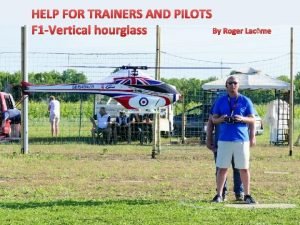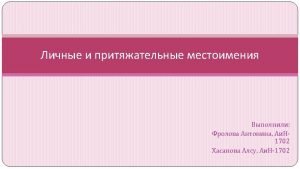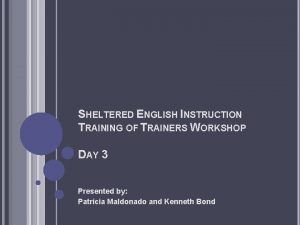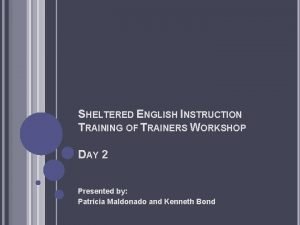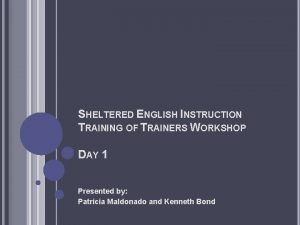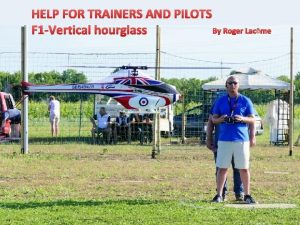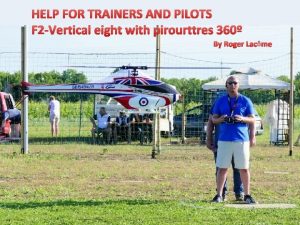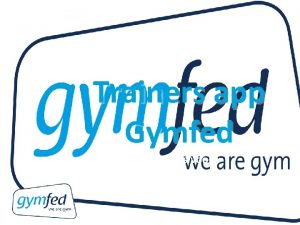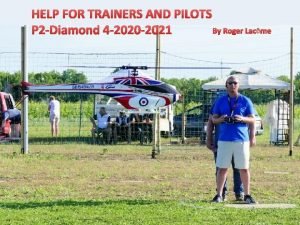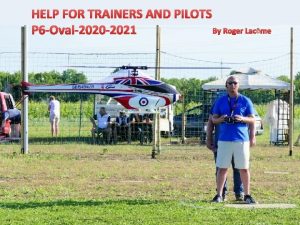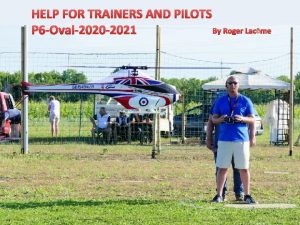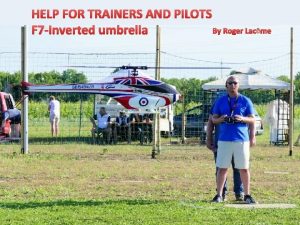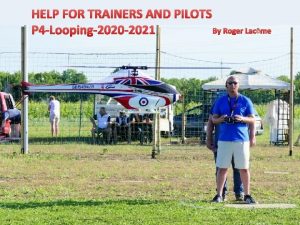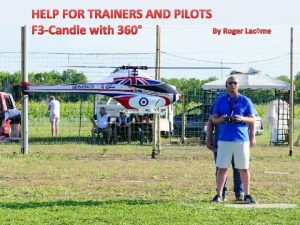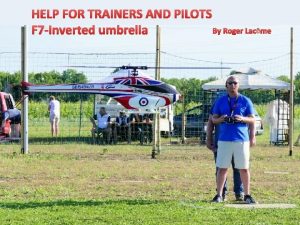HELP FOR TRAINERS AND PILOTS F 1 Vertical













- Slides: 13

HELP FOR TRAINERS AND PILOTS F 1 -Vertical hourglass ô

Before I begin the comments on the figures of the "SF and F" program, I would like to give a reminder concerning the preparation of the terrain and the knowledge of the figures. ● All markers and / or flags must be in place (see the preamble document). A little reminder about the tracing of the evolution area will not hurt!

● It is imperative that both the pilot and the trainer read the description of each figure and the point-by-point analysis as well as appendix 5 D. 1 General and appendix 5 E including 5 E. 6. 1. to 5 E. 8. ● The presence of a trainer is necessary to progress, but of course, he does not need to be there for each training. As with the stationary figures of the program "P", it is preferable to have a relatively slow speed of translation rather than fast because there also in this stationary figure program there are double pirouettes of 180° with change of direction of rotation! But of course, everyone is free to do as they want according to their riding style.

A little reminder concerning the difference between a tail-turn and stall-turn. Aside from the fact that the two must be around the main rotor axis, a 360° rotation (Tail-turn) must be performed symmetrically with respect to the end of the ascent, half during the descent. In this case, the helicopter must rotate 180° during the end of the ascent and 180° during the descent. (see Annex 5 E in: 5 E. 6. 8. ) Note: According to the description, this rotation can be 90° / 540° etc. For a 180° reversal (Stall-turn), after stopping the ascent the helicopter must rotate 180° during the descent. 180° 270° 90° 0° 360° Start End

● MA take off vertically from the helipad and ascends to 2 m, stop and hovers for a minimum of 2 seconds, ● flies backwards to flag 1 (2) while simultaneously performing a 90° nose in pirouette, stops and hovers for a minimum of 2 seconds. ● MA ascends sideways to 7 m over flag 2 (1) by a sraight line while simultaneously performing two 180° pirouettes that are in opposite direction, stops and hovers for a minimum of 2 seconds. ● MA flies sideways horizontally back to flag 1 (2) while simultaneously performing two pirouettes 180° that are in opposite direction, stops and hovers for a minimum of 2 seconds. ● MA descends sideways to 2 m over flag 2 (1) by a straight line while simultaneously performing two pirouettes 180° that are in opposite direction, stops and hovers for a minimum of 2 seconds. ● MA flies sideways horizontally to the helipad while simultaneously performing a 90° pirouette in opposite direction as the first pirouette, stops and hovers for a minimum of 2 seconds. ● MA descends and lands into the helipad. Note 1 : The change of the pirouettes direction must be done smoothly on the centre line. Unofficial note: When performing the two pirouettes 180° in opposite direction, the direction of rotation at the start is not imposed


Comments: By proposing this figure, I may not have made a gift to the pilots because there are no less than 17 crossing points to respect, but we are in a semi-final and final program! The main difficulty is to synchronize the translation speed with the rotation rate, because since the translation speed must be constant from one end to the other of the figure, the rotation rate must vary! ● First 5 m translation with 90° rotation. ● Second and third translations of just over 5 m but with a rotation of 180°. ● Fourth and fifth translations with a 5 m translation with a 180 ° rotation. ● Which means that each time the turnover rate is different.

The trainer can position himself directly at the location of judge 4, this will allow him to check if the ascent to 2 m is correct and he will be in the right location to check if the axis of the helicopter is at 45° at the point of passage (P 2). Then he must move to the location of judge 5 to check if the stop is vertical to the F 1 flag and also to check that the axis of the helicopter is at 90°, still relative to the plane of flight.

Then after it will move on the line of judges as the helicopter evolves to check: ● That when it is vertical to the "A" coordinate system (P 4), the axis is well in superposition with the flight plan. ● When it is vertical to the center line (P 5) it should be 90° and the change of direction should be very smooth. ● That when it is vertical to the "B" mark (P 6) that the axis is well in superposition with the flight plan.

When the helicopter arrives at the waypoint (P 7) the trainer must check four points: ● That the helicopter be well above the F 2 flag (P 7). ● That it is well at 90° to the flight plan. ● Let it be 7 m high. ● That he stayed in the flight plan and did not go deep.

We leave with the horizontal translation with the two 180° pirouettes: ● Vertical mark “B” (P 8), helix superimposed on the central line. ● Vertical center line (P 9), same comments as (P 5). ● Vertical mark "A" (P 10), same comments as (P 4). ● Vertical F 1 flag (P 11), same comments as for the waypoint (P 7) F 2 flag. ● And of course, all this on a horizontal rectilinear trajectory.

We continue with the descent and the two pirouettes inverted by 180°, same comments as during the ascent, checking at the end of the descent the same points when F 1 (P 3). All that remains is the horizontal translation with a 90° pirouette in the opposite direction to that at the start, the helicopter having to be at 45° when it is vertical to the "B" mark. Of course, one should not overlook the fact that you need a regular rate of descent!

Thanks for your interest Training by Roger Lacôme Power Point by Eladi Lozano For Subcommitte the F 3 CN CIAM-FAI
 Vertical integration course for trainers
Vertical integration course for trainers Self help and community help is the motto of
Self help and community help is the motto of Trainersapp
Trainersapp Kpi for trainers
Kpi for trainers Cdm trainers
Cdm trainers Look at your trainers
Look at your trainers Le caf trainers
Le caf trainers Trainers of school psychologists
Trainers of school psychologists Ace cpt promo code
Ace cpt promo code Sheltered 2 trainer
Sheltered 2 trainer Sheltered trainer
Sheltered trainer Sheltered trainers
Sheltered trainers Sdaie definition
Sdaie definition African american fighter pilots
African american fighter pilots
